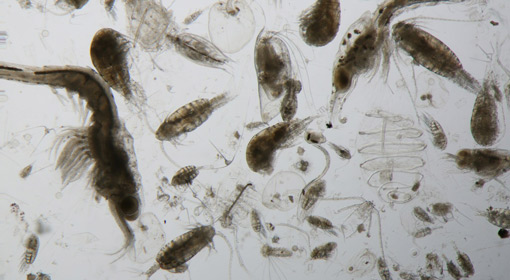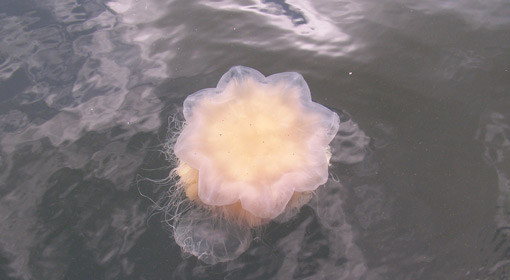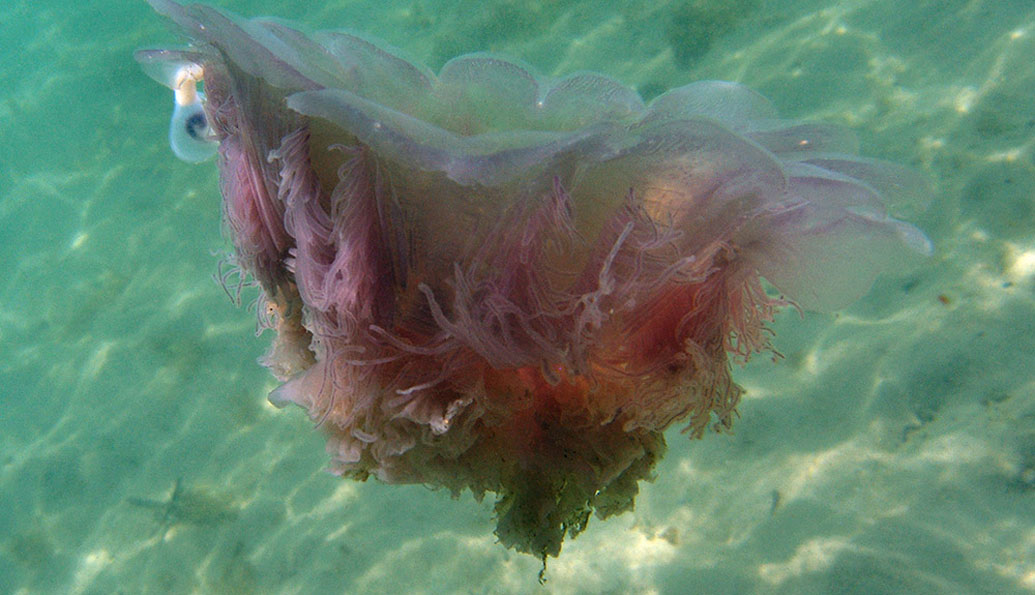Sea jellies are voracious predators. Most sea jellies eat zooplankton, the microscopic animals that occur in enormous numbers in seawater. There are many different types of zooplankton, including copepods (tiny crustaceans) and larvae of animals such as crabs and snails. As a sea jelly swims through the water the contractions of its bell sweeps water laden with zooplankton over their tentacles. When a zooplankton encounters the tentacle, thousands of tiny stinging cells (cnidocytes) fire simultaneously and inject venom into the zooplankton. The zooplankton are then transferred to the mouth where they are ingested.
 Zooplankton are the microscopic animals that occur throughout the ocean. Sea jellies eat many types of zooplankton. Credit, CSIRO IMOS by Julien Uribe-Palomino.
Zooplankton are the microscopic animals that occur throughout the ocean. Sea jellies eat many types of zooplankton. Credit, CSIRO IMOS by Julien Uribe-Palomino.
 The Lion’s Mane sea jelly commonly eats Moon jellies. Credit, Kylie Pitt.
The Lion’s Mane sea jelly commonly eats Moon jellies. Credit, Kylie Pitt.
Many comb jellies also eat zooplankton but they use sticky cells (colloblasts), instead of stinging cells to collect their prey. Whereas sea jelly stinging cells are harpoon-like and deliver toxins, the sticky cells of the comb jellies act like glue and adhere to zooplankton. Since comb jellies don’t have toxins they are completely harmless to humans.
Some sea jellies eat other jellies. For example, the Lion’s Mane jelly (Cyanea) usually feeds on the Moon jelly (Aurelia aurita). Some lobate comb jellies have very wide mouths that allow them to engulf other comb jellies that are almost as large as themselves.
